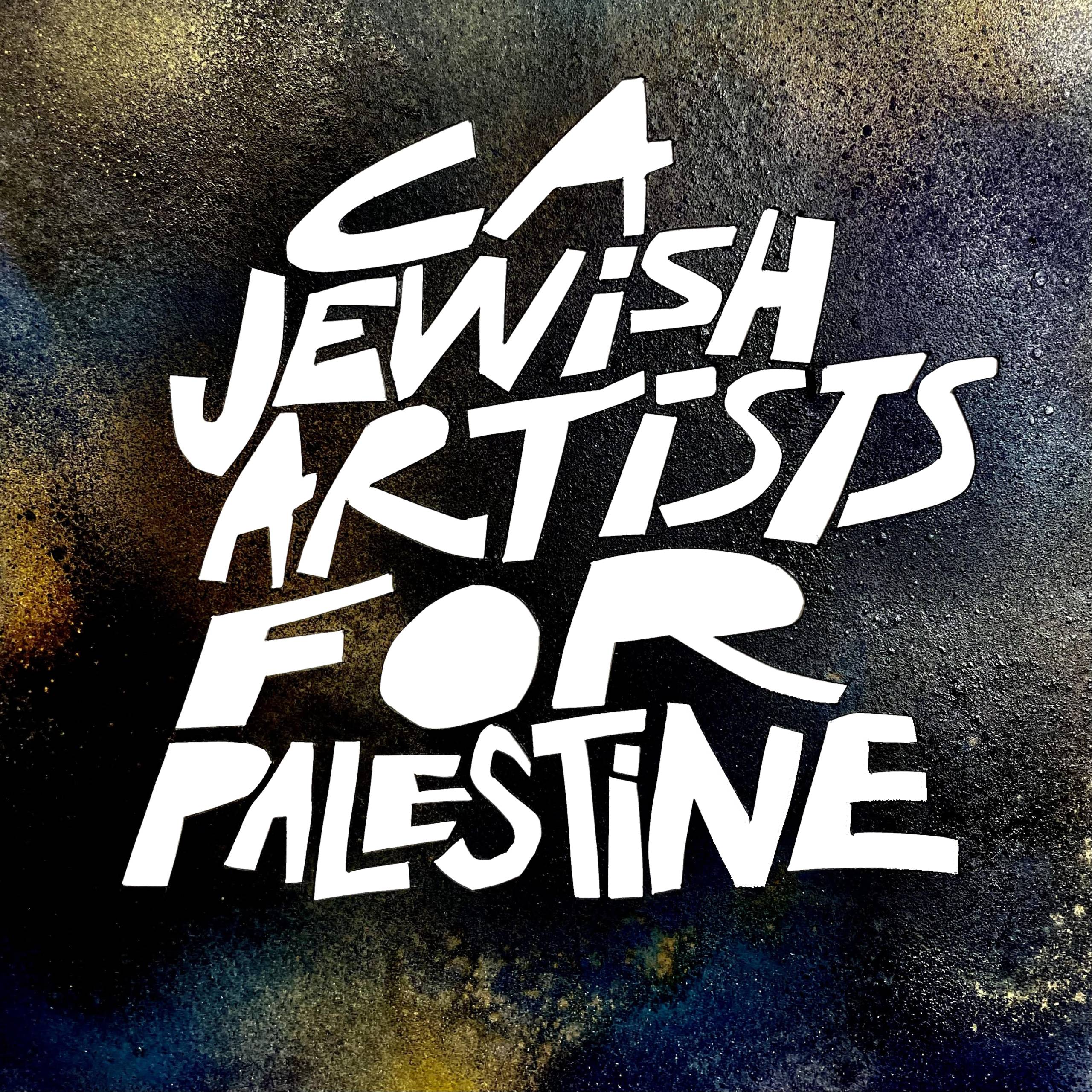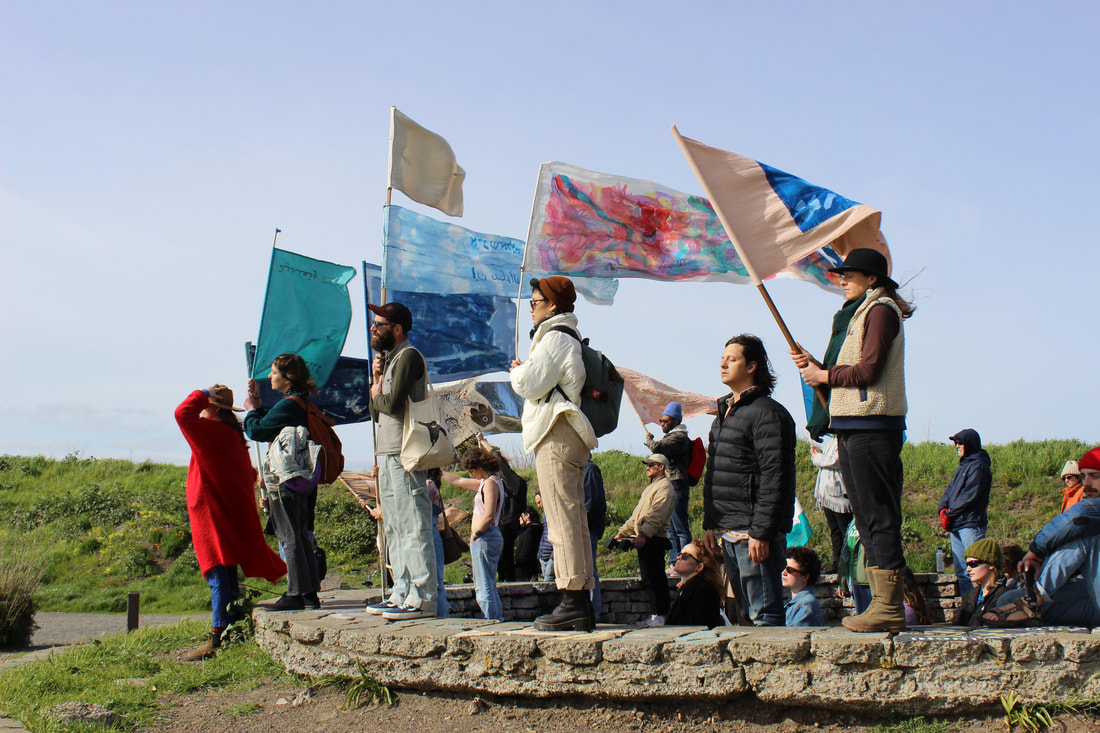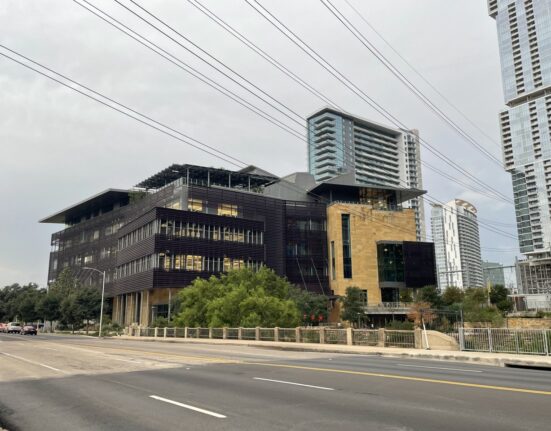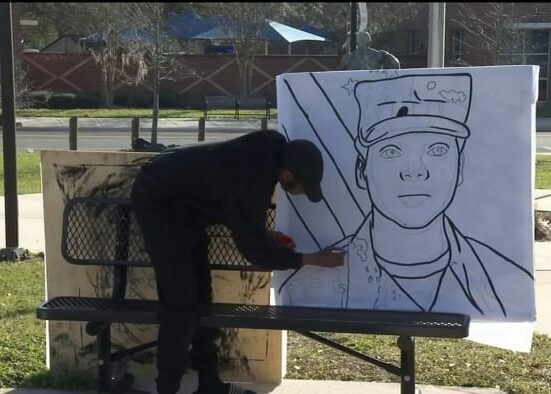Sobko added, “I wish for some ethical clarity and backbone and courage.”

The photo piece that Sobko withdrew, The Four Mitzvot of the Queer Soviet Jewish Diaspora, is a collaboration with Zadov and Aravah Berman-Mirkin under the name Krivoy Kolectiv. It features Ukrainian head scarves embroidered with four mitzvahs, or commandments, including one for a free Palestine.
The CJM’s interim Executive Director Kerry King told artists it would not join PACBI. In a press release issued April 5, the California Jewish Artists for Palestine raised the fact that the CJM has previously received funding from the Israeli government. (King said the CJM hasn’t received funding from the Consulate General of Israel or other Israeli organizations since 2021.)
Additionally, another museum funder, the Helen Diller Family Foundation, has been accused of funneling money into Canary Mission, an organization known for doxxing anti-Zionist students and professors.
King said many of CJM’s donors have a variety of philanthropic projects that are out of CJM’s control. “We have donors who support the arts and support having a Jewish museum in San Francisco,” she told KQED. Because of these donors, added King, “We are able to do what we do. We’re able to continue to operate and have our doors open.”

Another point of contention between California Jewish Artists for Palestine and museum leaders arose around the wall text that would have accompanied their artworks. Senior Curator Heidi Rabben told KQED that the CJM was open to artists using the phrase “anti-Zionist” to describe their political stance, but the parties disagreed on how to contextualize the term, which means different things to different people.
In their list of demands, the artists wanted full control over wall text and the right to modify or withdraw their works at any time, which the museum refused. Rabben and King said they disagree with the artists’ characterization of this as censorship in their press release.
“We simply asked that they define what they meant in using [“anti-Zionist”] and include that as well in the statement so that it was very clear,” Rabben said, noting that she respects the artists’ decision to withdraw their work. “What they meant by it, as we understood their work to be about, was not questioning the right of Israel to exist, but to say that they were envisioning Jewish futures outside of nationalism.”
Sobko said abstract debates about terminology distract from the real-life suffering of Palestinians.
“Zionism [is enacted] as a Jewish ethno-nation state. And then that creates an apartheid system against Palestinians,” Sobko said. “To me, anti-Zionism is … a refusal to create hierarchies of people within militarized nation states, in this case being Jewish supremacy. But I’m also against it on Turtle Island in the United States just as much.”
“This is about our Jewishness bringing us here, ethically, to stand up and say, ‘This is unacceptable,’” said fellow collective member Kate Laster, who withdrew two works, including a screen print reading, “No one is free in apartheid. Free Palestine. Solidarity is essential.”
“None of our consent can be manufactured to conflate any justification for apartheid, or genocide [of Palestinians],” Laster added.

Another artist, Liat Berdugo, separately withdrew from California Jewish Open, concerned that the exhibit wouldn’t sufficiently address what she describes as the Israeli government weaponizing Jewish grief after the Oct. 7 Hamas attacks to justify the killings and displacement of Palestinians. She said the language in CJM’s contract made her uneasy about whether the message of her work would be lost.
The multimedia work Berdugo withdrew, Seeing It For the Trees, examines an Israeli organization that plants trees under the guise of environmentalism. “But really a lot of it is greenwashing,” she said. “Planting forests over the ruins of Palestinian villages strategically to camouflage them … to claim lands that were Palestinian and make them public parks, which then are subject to different legal jurisdictions, and deny the right of return.”
The decision to withdraw from the show was difficult for Berdugo, because she specifically wanted a Jewish audience to see her piece. “I think these conversations are necessarily messy,” she said. “Is there a way to have these conversations not on the surface, but on a tectonic level, that identifies structures and systems?”
The California Jewish Artists for Palestine are in the early stages of organizing their own exhibition, and say they invite artists, Contemporary Jewish Museum staff and other creative professionals to join them.
Sobko describes the collective’s goals with a hopeful vision.







